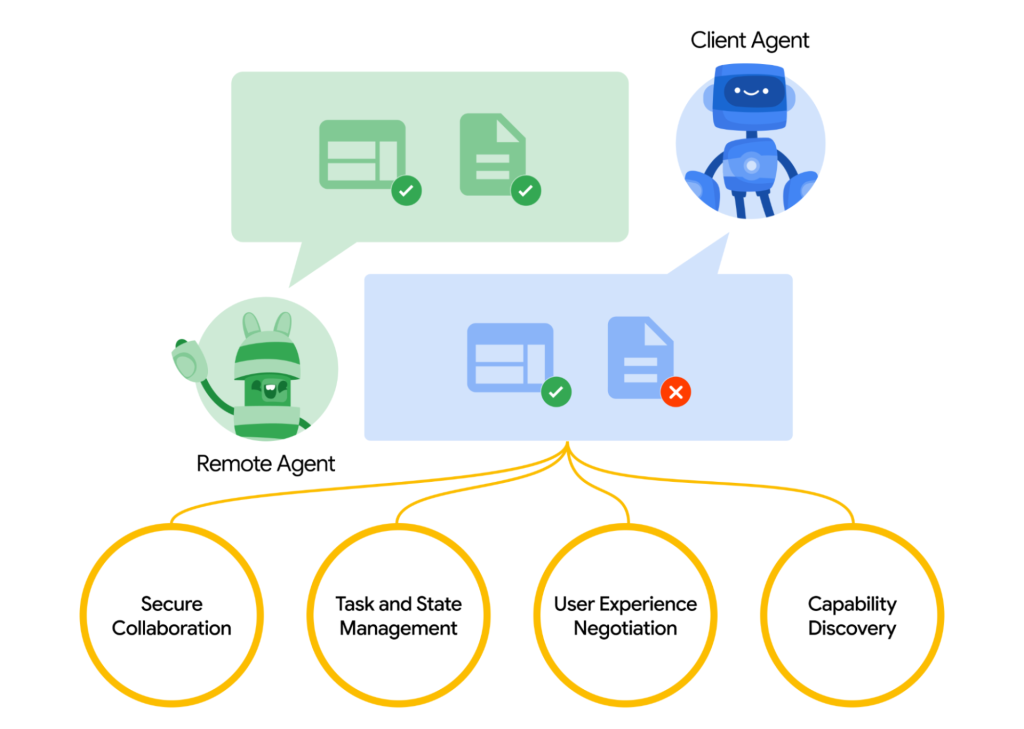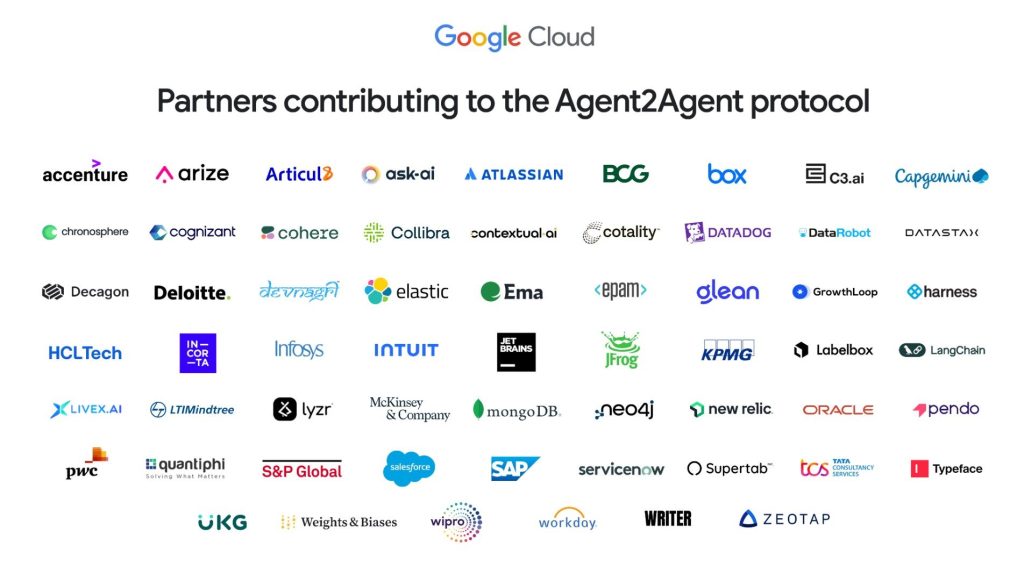Agent2Agent (A2A) is making waves in the tech world with its promise to revolutionize how AI agents collaborate across various platforms and vendors. As Google announces this open interoperability protocol, it aims to dissolve the barriers that have traditionally kept AI systems siloed and unable to communicate effectively. By standardizing interactions between different agents, A2A opens up a new realm of possibilities for businesses seeking to leverage the full potential of artificial intelligence in their operations.
What is Agent2Agent?
Understanding the Protocol
Agent2Agent is an innovative framework designed specifically for facilitating seamless communication among AI agents, regardless of their underlying technology or vendor. Think of it as a universal language for different AI systems, allowing them to work together like a well-oiled machine. The protocol is not just another technical specification; it’s built on established standards such as HTTP and JSON, which means it can easily integrate into existing IT environments without requiring extensive overhauls.
The core idea behind A2A is simple yet powerful: it allows agents to discover each other’s capabilities through “Agent Cards” formatted in JSON. This means that an agent can publish what tasks it can perform, enabling other agents to choose the best fit for what they need—be it booking a flight or managing supply chain logistics.
Key Features of Agent2Agent

Capability Discovery: Agents advertise their strengths and functionalities via Agent Cards, simplifying task delegation.
Task Management: Each interaction revolves around specific tasks that have clear lifecycles, ensuring that all parties remain synchronized throughout complex workflows.
Collaboration Mechanism: A streamlined messaging system allows agents to exchange context, results (or “artifacts”), and user instructions efficiently.
User Experience Negotiation: The protocol supports dynamic conversations about how information should be presented based on user interface capabilities—making interactions smoother and more intuitive.
Security First: Built with enterprise-grade security measures in mind, A2A prioritizes safe communication channels among diverse agent ecosystems.
By adopting these principles, Agent2Agent ensures that AI systems are not only interoperable but also capable of handling complex tasks collaboratively while maintaining high levels of security and usability.
Benefits of Agent2Agent for AI Collaboration
Enhanced Interoperability
One of the standout advantages of A2A lies in its ability to foster interoperability among diverse AI solutions from various vendors like Salesforce and SAP. Organizations often find themselves locked into specific ecosystems due to compatibility issues between tools from different providers. With A2A’s standardized approach, businesses can mix and match various intelligent agents without worrying about whether they’ll work together seamlessly.
This level of interoperability not only simplifies integration but also encourages innovation by allowing companies to utilize specialized tools without being constrained by proprietary limitations.
Streamlined Workflows Across Platforms
Imagine an office where your HR department uses one software while finance relies on another—and both need data from sales tools! With traditional systems operating independently, achieving efficient workflows becomes a challenge riddled with delays and miscommunications. Enter Agent2Agent!
By deploying A2A-enabled agents across departments, organizations can achieve streamlined workflows where information flows freely between systems like ServiceNow or MongoDB. For example:
| Department | Task | A2A Contribution |
|---|---|---|
| HR | Candidate sourcing | Collaborates with recruitment bots |
| Finance | Budget allocation | Accesses financial analytics tools |
| Sales | Lead generation | Integrates client relationship management |
Each department can rely on its preferred tools while still collaborating effectively thanks to the unified nature brought about by Agent2Agent’s architecture.
The Future of AI with Agent2Agent
Potential Use Cases
The possibilities with Agent2Agent are vast! Here are some potential use cases across industries:
E-Commerce: Imagine a customer service bot communicating with inventory management bots in real-time during peak sale periods.
Healthcare: Patient monitoring devices could sync with administrative bots that handle scheduling appointments automatically.
Manufacturing: Machines equipped with sensors could report malfunctions directly to maintenance bots that arrange repairs seamlessly using real-time data analytics!
These scenarios illustrate just how transformative A2A could be across sectors where collaboration between autonomous entities enhances operational efficiency dramatically.
Impact on Developers and Businesses

For developers working within complex multi-agent ecosystems, A2A provides essential building blocks for creating versatile applications without reinventing the wheel every time they encounter an integration challenge. It empowers them not just through coding flexibility but also through community-driven enhancements since Google has made this protocol open source—inviting contributions from interested parties worldwide!
Frequently asked questions on Agent2Agent
What is Agent2Agent?
Agent2Agent, or A2A, is an open interoperability protocol introduced by Google designed to enable seamless collaboration between AI agents across different platforms and vendors. It standardizes interactions among various AI systems, allowing them to communicate effectively and work together efficiently.
How does Agent2Agent enhance AI collaboration?
By providing a universal framework for communication, Agent2Agent allows different AI agents to discover each other’s capabilities through “Agent Cards.” This capability discovery simplifies task delegation and enhances workflows across departments by enabling diverse tools from various vendors to work seamlessly together.
What are the key features of Agent2Agent?
The main features of Agent2Agent include capability discovery through Agent Cards, task management with clear lifecycles, a streamlined messaging system for efficient communication, user experience negotiation for better interaction design, and enterprise-grade security measures ensuring safe communications between diverse agent ecosystems.
How will businesses benefit from adopting Agent2Agent?
Businesses can expect enhanced interoperability among their AI solutions, which encourages innovation without being constrained by proprietary limitations. By integrating A2A-enabled agents into their operations, organizations can streamline workflows across platforms like Salesforce and SAP while achieving significant productivity gains.
What industries can benefit from Agent2Agent?
A variety of industries stand to gain from implementing Agent2Agent. For instance, e-commerce could see improved customer service bots working alongside inventory management systems; healthcare could utilize patient monitoring devices that sync with scheduling bots; and manufacturing might leverage sensors that report issues directly to maintenance bots for swift repairs.
Is Agent2Agent suitable for small businesses as well?
Absolutely! While larger enterprises may have complex needs, small businesses can also take advantage of the flexibility and interoperability that Agent2Agent offers. It allows them to integrate various tools without heavy investments in proprietary systems.
Can developers contribute to the development of Agent2Agent?
Yes! Google has made the Agent2Agent protocol open source, inviting developers worldwide to contribute enhancements. This community-driven approach fosters innovation and ensures that the protocol evolves based on real-world needs.
Will using Agent2Agent reduce costs for businesses?
Integrating varied platforms into coherent workflows powered by interoperable agents can lead to cost reductions alongside improved service delivery speeds. Businesses adopting A2A are likely to see substantial productivity gains while optimizing their operational expenses.

